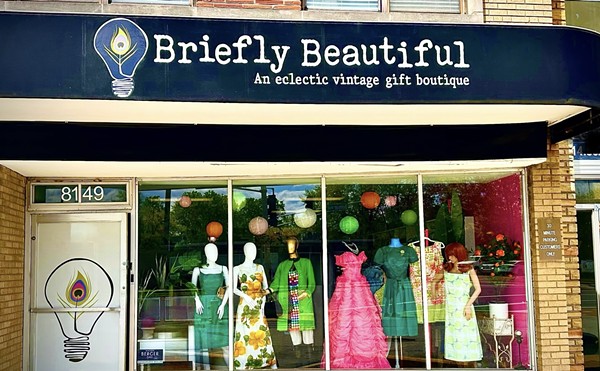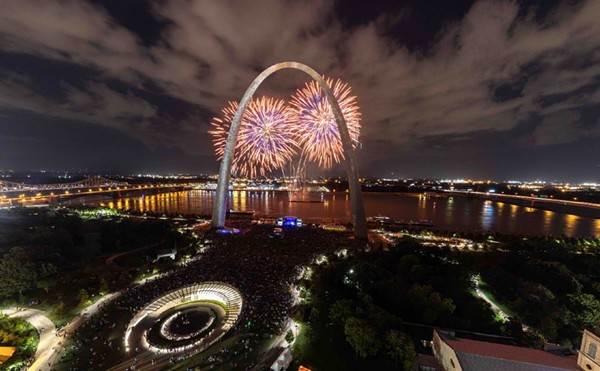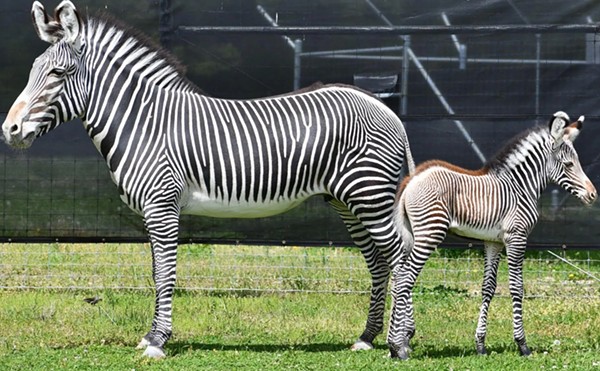Saturday evening's performance opened with House's 1993 "Four Towers," set to Robert Moran's "Music from the Towers of the Moon," lush, lyrical, frankly retro. The full company, all clad in white singlets and gender-bending gray kilts, entered to an upbeat allegro, but the brisk motion led into a much slower, elegiac solo by Sasha Ivanochko, a blond, stocky dancer in amazing control of her balanced poses and her descents and risings from the floor. Another slow movement, this time danced by a trio of two women and one man, led into a presto final movement with soloist Valerie Calam weaving in and out of the full company.
Next came the 1985 "Schubert Dances," a jolly, slight but charming anthology of short pieces given some extra texture by the sound of a forte piano. As performed by Graham McKelvie, the dances seemed a great deal like the little dances Jerome Robbins made for a certain dancer in the White Oak Project to some Bach cello excerpts. McKelvie seemed a bit offhand and unconcerned as he moved through the five apparently simple but actually demanding pieces. His appearance of improvising was a fine and disarming effect.
The first half of the evening ended with the 1983 "Glass Houses," which earned its five dancers yells of approval. Set to Ann Southam's minimalist, fast-moving piano piece "Glass House No. 5," the dance divided between a trio of two men and a woman in shiny white lycra leotards and two women in gray tank suits. The dancers, in rapid kaleidoscopic motion, formed balanced and symmetrical lineal arrangements that dissolved, then resolved into others. Southam's music enhanced the symmetry with its insistent, repeated and only slightly varied phrases. "Glass Houses" was listed in the program as the first dance of the evening, and trading places with "Four Towers" may not have been such a great idea -- better to open with something light and bright, then close with an equally brilliant but darker piece.
After the intermission, four men in white shirts, ties and trousers danced House's 1992 "Early Departures," set to John Rea's 1989 "Kubla Khan" with its dirge refrains -- a grim look, as the program note explains, at "friendship in a time of plague." It opens with one man kneeling, surrounded by the three others lying prone, abandoned and corpselike about him, brushing him with dead hands on dead arms. Some recurring figures included a mimed violinist, flutist and guitarist, performing, perhaps, some danse macabre; dancers collapsing and being raised, only to collapse again; and, most striking, all four dancers appearing to be rolled over and around each other like bodies shoved along by a bulldozer. Although compelling, "Early Departures" was difficult to watch, and I was relieved at its end.
The evening's last piece, "Vena Cava," on the other hand, could have been encored and no one would have minded a bit. The vena cava is one of the body's largest and most crucial veins, and what it has to do with the dance is mysterious, but who cares? Premiered in 1998 and set to Robert Moran's "Open Veins," the piece once again costumed the men in short skirts -- this time blood-red -- and black tops, with the women in the same clothing, except that their skirts were ankle-length and slit to the upper thigh. It opened with Christopher T. Grider alone onstage, moving quickly, not in the least effeminately, in ways one tends to associate more with women: little steps, lots of hip motion, not quite bump-and-grind. The woman soloist, Lara Barclay, in contrast, moved more slowly, more deliberately. The company, however, drew the most attention with its speed and flash, the red-and-black costumes and subdued lighting in contrast with the luminousness of the dancing.





